Album review: Dream run continues for DMA’S on fourth LP How Many Dreams?
On its accomplished fourth album, DMA’S — led by an unlikely melodic siren in Tommy O’Dell — has deployed enough hooks to equip a fishing fleet, powered by walls of six-string sound.
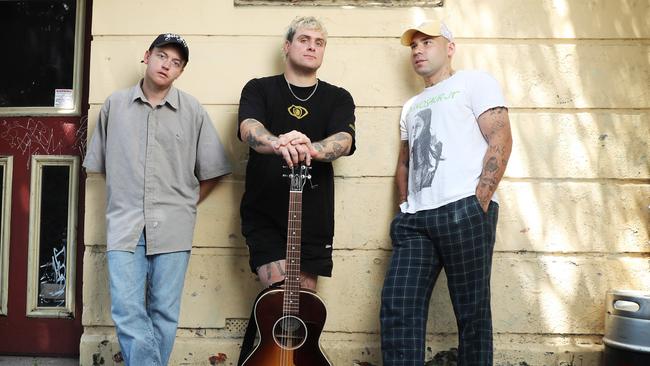
Album reviews for week of March 24 2023:
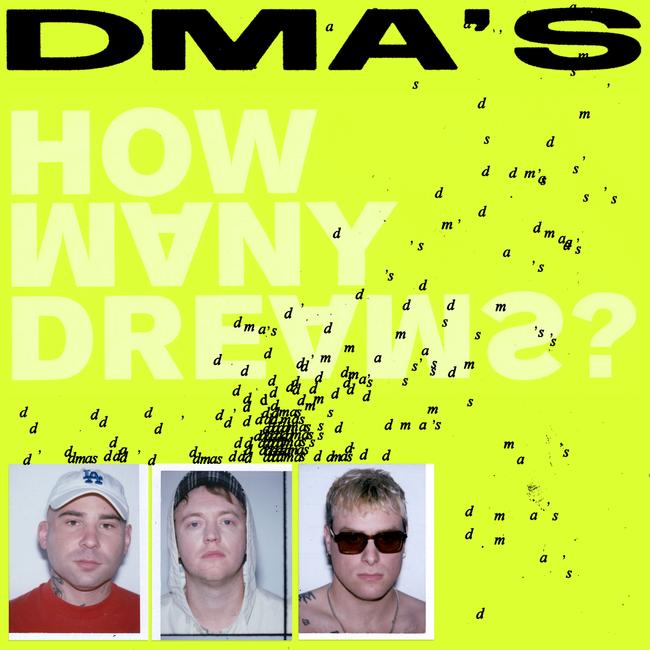
ALTERNATIVE POP/ROCK
How Many Dreams?
DMA’S
I Oh You/Mushroom
Sydney trio DMA’S subscribes to Jeff Tweedy’s aphorism, from his 2020 book How To Write One Song, that lyrics should inherently come with melodies attached. Guitarist Johnny Took likely had the Wilco leader’s maxim in mind when a catch-up drink with a mate resulted in Everybody’s Saying Thursday’s the Weekend, a song he says virtually wrote itself from its title, plucked from the evening’s banter. It was, in effect, its own hook, and there are enough of those littered throughout How Many Dreams? – the band’s festival-friendly fourth album – to equip a fishing fleet. They don’t all take lyric form, either. Took and fellow DMA’S guitarist Matt Mason combine to create walls of six-string sound, their respective electric and acoustic instruments triggering synths and drum loops that help reshape those walls into high-rise sonic skylines. But the central pillar in DMA’S is the voice of Tommy O’Dell, a melodic siren that blares across the rooftops, never needing to compete for space in the band’s otherwise all-enveloping soundscape. He’s an unlikely looking frontman, dressed by Lowes in baggy clothes, hoody or baseball cap, but appearances mean nothing when you possess as pure an instrument as his.
Take the opening title track, one of at least three huge dance grooves that moves from a simple keyboard sequence and synthesised handclaps into a rousing vocal mantra via which O’Dell steers the song toward its shattering climax. It’s all over too soon, leading into Mason’s Olympia, one of several songs on the album that transcend the band’s early Britpop influences (a legacy of Scouser O’Dell’s formative years in Liverpool). The album is paced like a live set, all the way through to its raucous dancefloor-filling closer, De Carle; there’s also a playful nod to American rockers Cheap Trick in Olympia’s power chords and soaring chorus melody, while Forever’s symphonic intro recalls Mancunian band The Verve. This is the beauty of DMA’S – there’s no reticence in baldly signposting the band’s antecedents, as cool or uncool they may appear. As O’Dell sings on I Don’t Need To Hide, another song with a stratospheric chorus that most likely originated with that very line: “In life, it’s enough”. And if you were singing along with O’Dell and thousands of punters as part of a festival audience, punching the air in unison, DMA’S gives you more than enough melody to carry the tune.
Phil Stafford
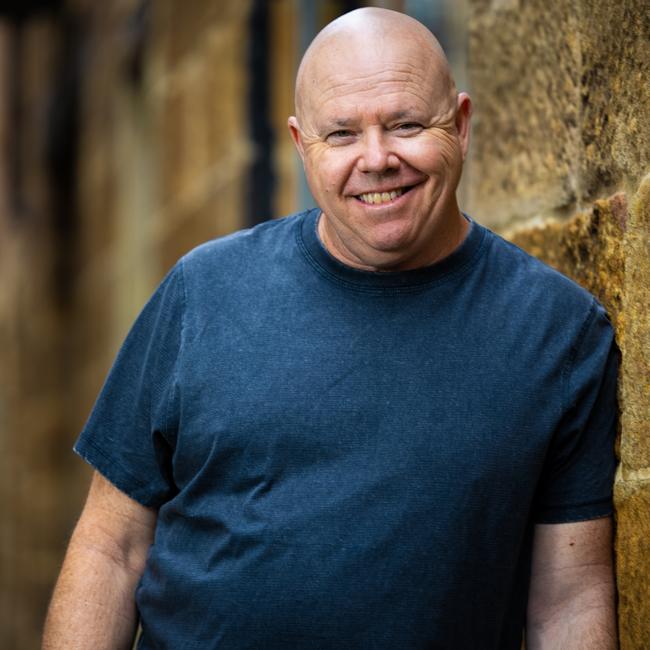
JAZZ
The Cord
John Harkins
Independent
Despite the widespread desire for originality, most jazz musicians these days play in one or another historical style, give or take. John Harkins, a master at the piano keyboard, emulates with boundless authority the bop piano style which came out of Chicago & Detroit in the 1950s. (Think African-Americans Barry Harris, Tommy Flanagan, Hank Jones). Harkins has given me so much pleasure in Sydney jazz clubs for so long that I naturally warm to this album. It was recorded in Chicago in 2022, with Harkins reuniting with two Chicagoans John Webber (bass) and George Fludas (drums), whose playing together began in 1977 in Wheaton, Illinois, well before Harkins moved to Australia. They breeze through a repertoire ready-made for this trio: five tunes by great jazz composers (Ellington, Monk, Cedar Walton, Thad Jones), two Harkins originals, and two standards. Harkins and his colleagues capture the essence of the immortal Chicago style, and play it so beautifully, that it sounds completely modern and contemporary today.
Eric Myers
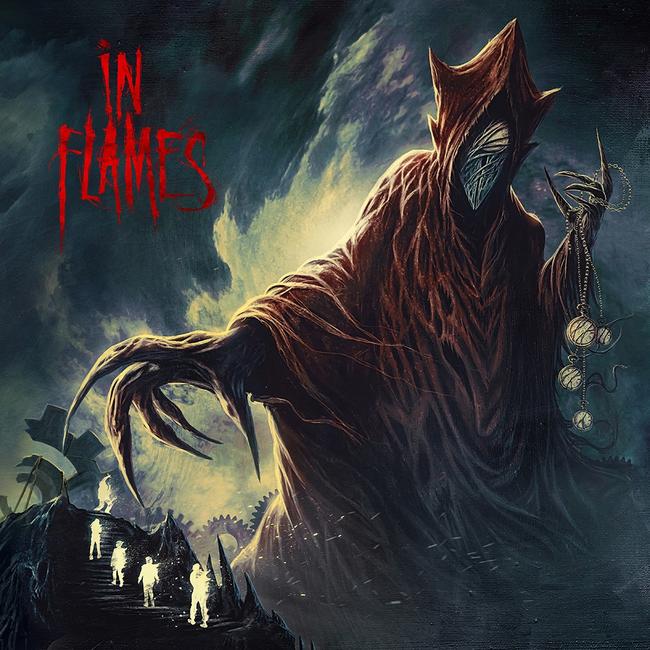
METAL
Foregone
In Flames
Nuclear Blast
It’s been said that consistency is key, but there comes a point where it closes more doors than it opens. Case in point: Swedish metal titans In Flames. Back in the 2000s, a new record from the band was an event. Such is the group’s hellbent focus on the same style of slamming alt-metal, however, that it has sadly lost its flavour. Is Foregone, the band’s 14th album, egregiously bad? Not at all. Considering the lofty heights of the quintet’s heyday, however, it’s not an exciting record by any imaginative stretch. There’s some life thrashing about in the churn of Meet Your Maker and the heaviness of The Great Deceiver, but far too much of the record finds itself bogged down in either mid-tempo crawls or ill-advised balladry. Like many 2020s records, its lyrics are attempting to say something profound about the state of the world. Fine in theory, but in execution it’s as hollow as the last few Muse albums. In 2023, the harsh reality is that In Flames can barely hold a candle to its former self.
David James Young
Album reviews for week of March 17, 2023:
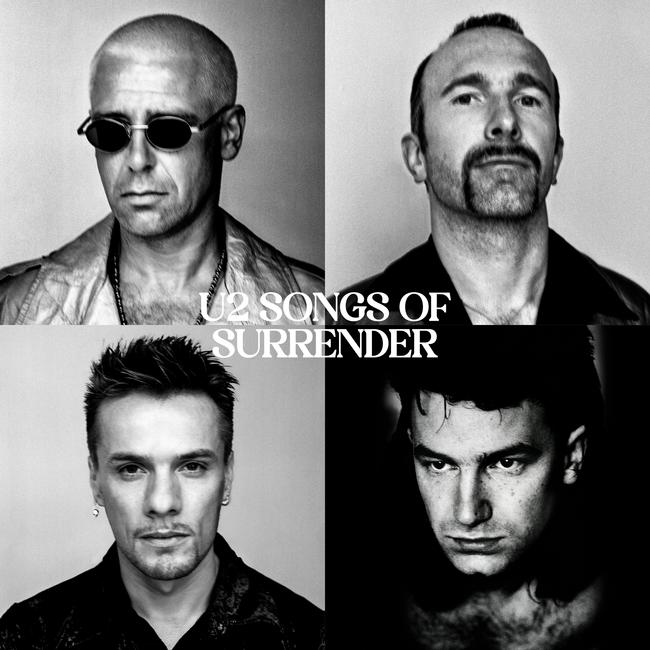
ROCK
Songs of Surrender
U2
Universal
When news of this U2 retrospective release broke in January, rumours of the enduring Irish quartet’s impending break-up took on a fresh intensity. Five years have passed since the last album, Songs of Experience; the band’s second long-term manager had moved on, and drummer Larry Mullen Jr declared himself medically unfit for rescheduled Covid-affected shows in Las Vegas later this year. (He’ll be replaced by Dutchman Bram van den Berg.) Now comes this 40-track compendium of “reimagined” U2 songs, its concept mirroring the memoir published last year by singer Bono, titled Surrender: 40 Songs, One Story. Taken together, it suggested the band may have run out of creative road. Truth is it’s a holding measure, with work already under way on a 16th album Bono describes as “a noisy, uncompromising guitar record”. That may come as some relief for devotees of The Edge, who alternates between piano and acoustic guitar for much of Songs of Surrender, a kind of demo album in reverse that deconstructs and reassembles 40 U2 songs, playing fast and loose with vocal keys and phrasing, even updating lyrics in some cases. It was essentially a lockdown project for Bono and Edge, with minimal contributions from Mullen and bassist Adam Clayton, even though the 40 songs are arbitrarily divided into groups of 10 to denote each band member.
Stripped of the original recordings’ bombast, each “new” version stands or falls on the strength of the song as written, and how it’s re-rendered here by the core duo with producer Bob Ezrin. The bigger and better-known tracks have undergone the most noticeable changes: Where The Streets Have No Name is reduced to just cello and voice, while the signature martial drumbeat of Sunday Bloody Sunday is discarded and replicated by Edge’s choppy acoustic rhythm guitar. The Fly plays out like a trance track, with two opposing bass lines, and Walk On, originally written for Burmese activist Aung San Suu Kyi, is reconfigured as an ode to Ukrainian president Volodymyr Zelensky. Every album of U2’s 40-plus-year recording career is represented, with the notable omission of 2009’s overwrought No Line On The Horizon. But let the arguments commence: it’s the songs left out (Gloria, New Year’s Day and Staring At The Sun among them) that will provoke as much discussion among U2 fans as the treatments of those included.
Phil Stafford
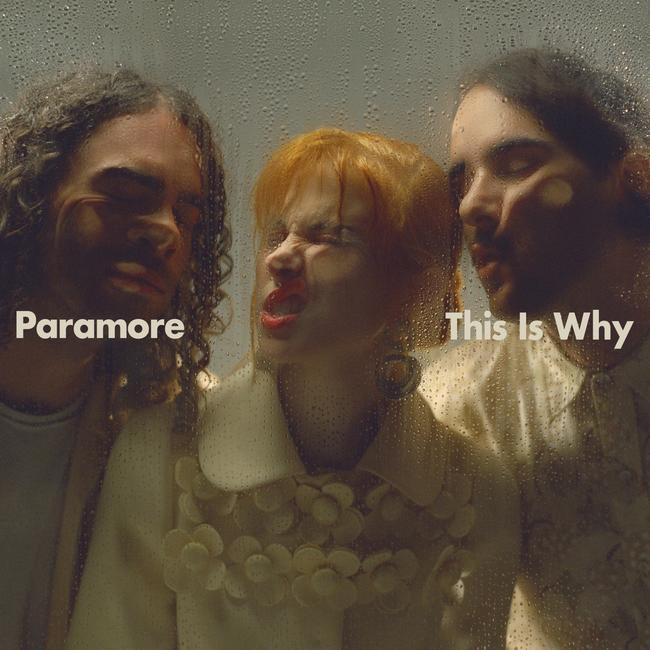
ALTERNATIVE POP
This is Why
Paramore
Atlantic
Paramore offered endearing pop-punk in the 2000s, then wide-screen pop-rock in the 2010s. What, then, for its first 2020s release? Why not pivot again: This Is Why contains some of the US band’s most inventive, intriguing left-turns yet. The opening title track bounces between new-wave, dance-punk and alt-rock – unlike anything before it in the Paramore canon. Ensuing singles The News and Running Out Of Time are also career-best efforts: the former a steely, knife-edge take on post-punk, the latter a twirling spiral of chopping guitars hammering into Hayley Williams’s frenzied, frenetic vocals. Even on the deeper cuts, Paramore maintains its edge and its focus with the new creative direction. The fitting spiral of Figure 8, as well as slow-burn closer Thick Skull, offer unabashed vulnerability and refined textures that encompass the trio’s evolution. You’re certainly not likely to see any other Warped Tour staples make this kind of record. The Tennessee band refuses to shut up and play the hits – not while still busy writing them.
David James Young
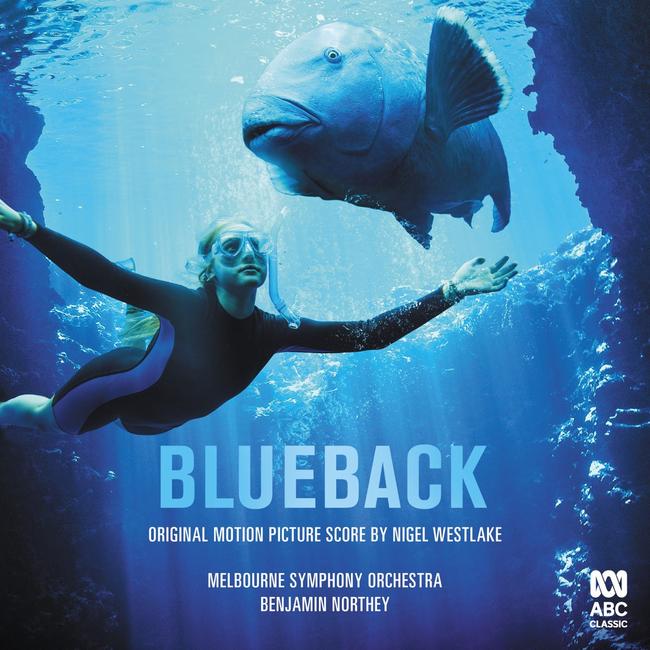
CLASSICAL
Blueback
Nigel Westlake
ABC Classics
Nigel Westlake’s sumptuous score for Robert Connolly’s 2022 eco-drama Blueback, based on Tim Winton’s 1997 novel, is played lovingly by the Melbourne Symphony Orchestra and conducted by the inimitable Benjamin Northey. There are memorable contributions from solo violin, cello and harp, enhanced by the incorporation of the distinctive cello vocabulary of Sarah Hopkins. Over 16 tracks and 42 minutes, it conjures up reminiscences of great sea-scores by Debussy and Ravel, and whale-song pieces by Alan Hovhaness and George Crumb, with echoes of Messiaen and Tan Dun. For all these resonances, this score is unmistakably Westlake, with its idiosyncratic orchestration and assured pacing, awash with undulations and glorious splashes of colour evoking the interplay of whales underwater, suggesting also those hybrid sea-creatures of Avatar 2. There is surely a (submerged) sea symphony here; even without Connolly’s astonishing imagery, a work for the concert hall would be most welcome.
Vincent Plush
Album reviews for week of March 10, 2023:
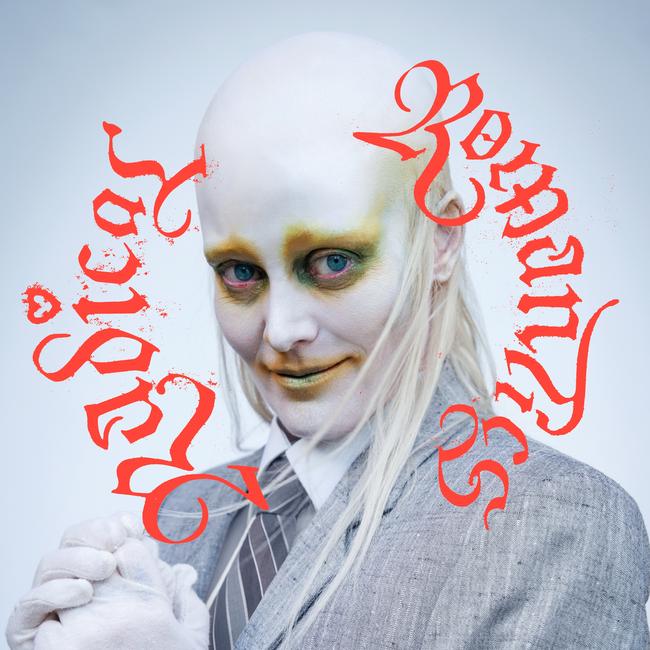
ALTERNATIVE/ELECTRONIC
Radical Romantics
Fever Ray
Rabid Records/PIAS
Swedish sibling duo The Knife carved their way into the mainstream during the early 2000s electronica renaissance and became critical and cult favourites with the release of 2006’s gothic-dance opus, Silent Shout. Karin and Olof Dreijer’s refreshingly odd and meticulously crafted soundscapes have always separated them from their contemporaries, as a group that delighted in blurring voice, gender, genre and personas. Their outsize impact comes full circle in the third solo album from Karin (they/them), who records and performs as Fever Ray. It reunites them with their brother in music after almost a decade, alongside a raft of simpatico collaborators that includes Trent Reznor of Nine Inch Nails. Fever Ray’s strength has always been in marrying the political and personal, but rarely has this sounded so effervescent. Every icily programmed note bends and vibrates as if reanimated by their creator, including Dreijer’s vocals, which cut through squelching, Hot Chip-style bass and a melee of percussion on New Utensils, and ducks and weaves around howling synths and battering toms on opener What They Call Us.
While moments on previous Fever Ray releases have sometimes felt more like manifestos than music, the opposite is true on Radical Romantics, a record billed by its creator as primarily concerning matters of the heart. On high points such as the swooning, floor-stomping Carbon Dioxide, Dreijer deploys pop melodies worthy of fellow Swede Robyn. It shouldn’t be surprising that the writers of Heartbeats, one of the most covered tracks of the 2000s, could manufacture such magic, but that songs like these arrive without sanded edges, still bubbling halfway between Berghain and a haunted house, is a true triumph. Kandy is a case in point: it builds a stirring ballad out of an unlikely Frankenstein groove of finger cymbals, human yelps and the sound of a sword being unsheathed. Dreijer clearly relishes being back in the studio with their sibling, whose mad professor energy contributes to the more elastic, avant-garde tracks on the album. But it’s their vocals, which gleefully shift into different keys and timbres, sometimes in the space of a single chorus, that prove to be the most engaging. A welcome return from a true master of the dark arts.
Jonathan Seidler
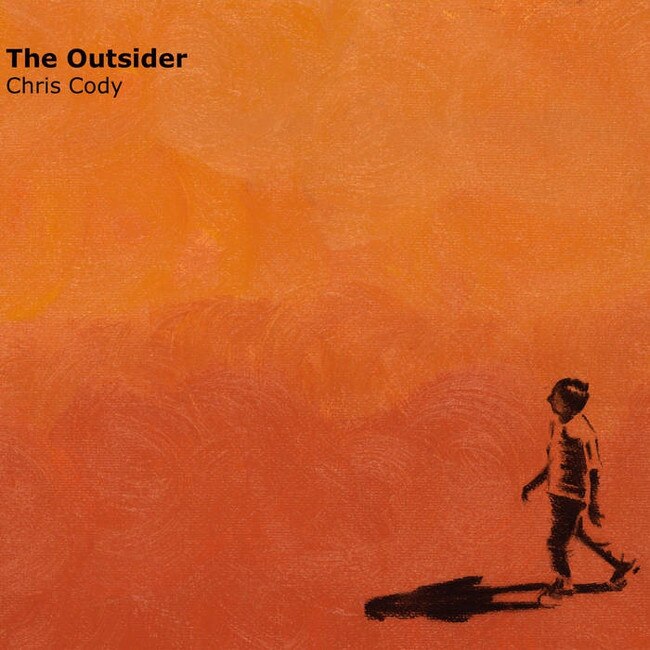
JAZZ
The Outsider
Chris Cody
Independent
A suite inspired by the idea that life is meaningless, as suggested in Albert Camus’s novellas, is seemingly a contradiction in terms, as no music genre is more life-enhancing than jazz. Still, Chris Cody’s response in musical terms to “questions of identity and purpose when faced with isolation” is infectious. He uses three horns and three rhythm players, with exotica supplied by John Robinson (oud) and Adem Yilmaz (percussion). There’s more than a hint of Parisian multicultural jazz, underlining Cody’s long-term immersion in French culture. The inspiration and compositional vehicles are of interest, but it’s the excellent improvisations that stand out. A stellar line-up includes some of Australia’s finest jazz musicians, whose solos inestimably enhance Cody’s nine compositions, particularly Michael Avgenicos (tenor saxophone), Lloyd Swanton (bass), the aforementioned Robinson, and the composer himself on piano. The album’s highlight is the title track, a thoughtful and ruminative ballad that lingers in one’s imagination.
Eric Myers

HIP-HOP
Sugar Coated Lies
Ziggy Ramo
Ramo Records
With his assertive debut Black Thoughts, Ziggy Ramo emerged in 2020 as one of the country’s leading Indigenous artists. His rapid-fire bars, detailing unflinching political convictions, were paired with striking neo-soul production and profound storytelling. Imagine the excitement, then, when Ramo shared a new album out of the blue – on January 26, no less. What followed, though, was a complete swerve: a largely melodic, romantically inclined record with barely any political material. Imagine if Zack de la Rocha stopped a Rage Against the Machine show so he could reflect on his last relationship: that’s the degree of whiplash. What ensues is an unsettled, conflicting 36-minute listen. Ramo’s new approach isn’t inherently bad – the velvety, Alice Skye-assisted title track is quite nice, for one. But there are clear teething issues in this creative smash-cut. Ramo never quite sounds sure of himself, lacking the confidence and craftsmanship of his debut. No, he doesn’t owe listeners constant state-of-the-union addresses – but maybe he owes it to himself.
David James Young
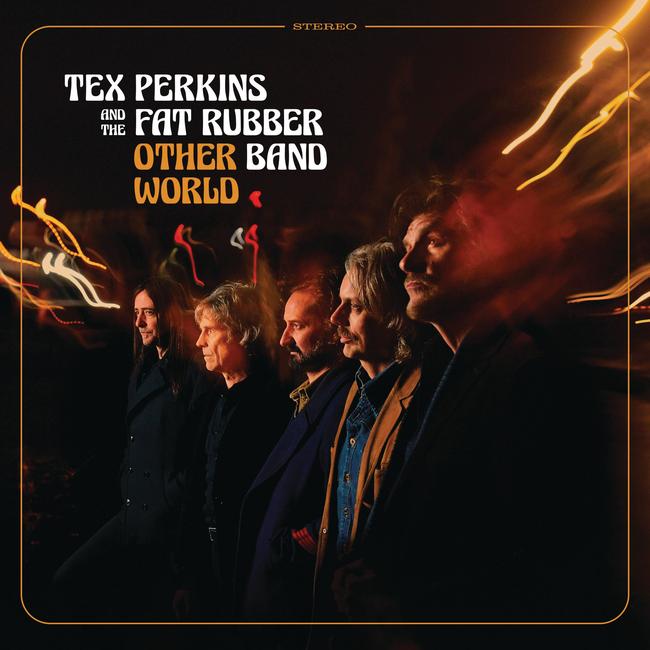
ROOTS
Other World
Tex Perkins & The Fat Rubber Band
Source Music
It has taken almost 30 years but Tex Perkins has finally found a foil to rival the Cruel Sea for his wry yet world-weary words. Matt Walker (guitars, piano, harmonica), bassist Steve Hadley (ex-Paul Kelly), drummer Roger Bergodaz (who also engineers this album, the band’s second) and Evan Richards (percussion, mandolin) are joined by special guests Lucie Thorne (who contributes backing vocals and a song) and Charlie Barker, who also sings backups and plays the otherworldly saw (yes, the carpentry tool) on two tracks. Other World is grounded in the blues and leads with its three best songs: Brand New Man, whose lyrics Perkins wrote on his way to meeting grandson Ernie for the first time; Thorne’s ethereal Around the World, which inspired the title; and a JJ Cale-meets-Bill Withers lament built on its best line – “This ain’t the blues, but it’s Pretty Damn Close”. Other tunes worth a mention are I Wanna Be (Close to You) and The Devil Ain’t Buying, both evoking Mick Taylor-era Stones.
Phil Stafford
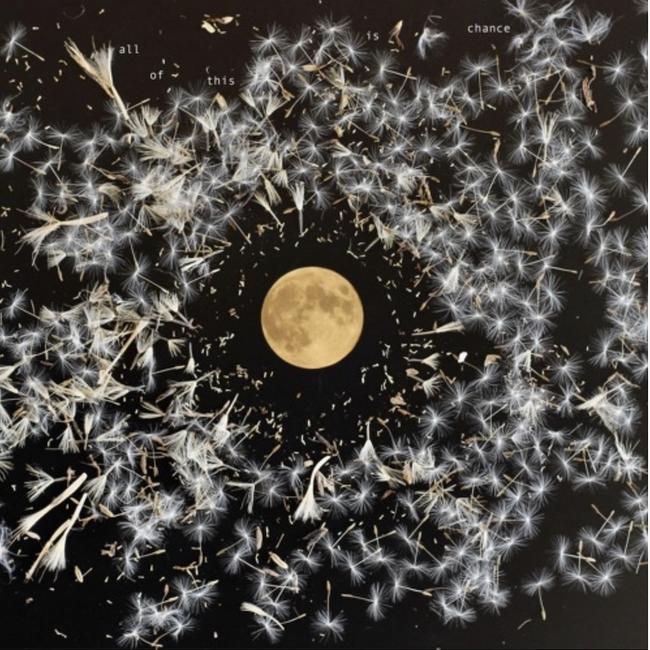
FOLK
All of This is Chance
Lisa O’Neill
Rough Trade
At 40, on her fifth album, Irish folk siren Lisa O’Neill reaffirms her startling originality while alluding to weighty subject matter such as the mid 19th-century Potato Famine and the 21st-century disconnect from Mother Nature. With her inimitable voice and idiosyncratic verses and phrasing, O’Neill beguiles and bewilders in equal measure, from the dramatic six-minute opening titular discourse on The Great Hunger to a relatively short and uplifting closing lullaby. The six songs in between — predominantly poetic paeans to avian life bearing lines like “Feathered friend, dig up and resurrect me / I long to live among the song of birdies / A lawless league of lonesome, lonesome beauty” — are ensconced in thoughtful settings that range from wistful fiddle and stark banjo to an orchestral arrangement, and from wheezy harmonium and quivering saw to tinkling piano, acoustic guitar and percussion. O’Neill’s uncompromisingly original approach is to be applauded, given the homogenised fare that permeates the female nu-folk ranks.
Tony Hillier


To join the conversation, please log in. Don't have an account? Register
Join the conversation, you are commenting as Logout